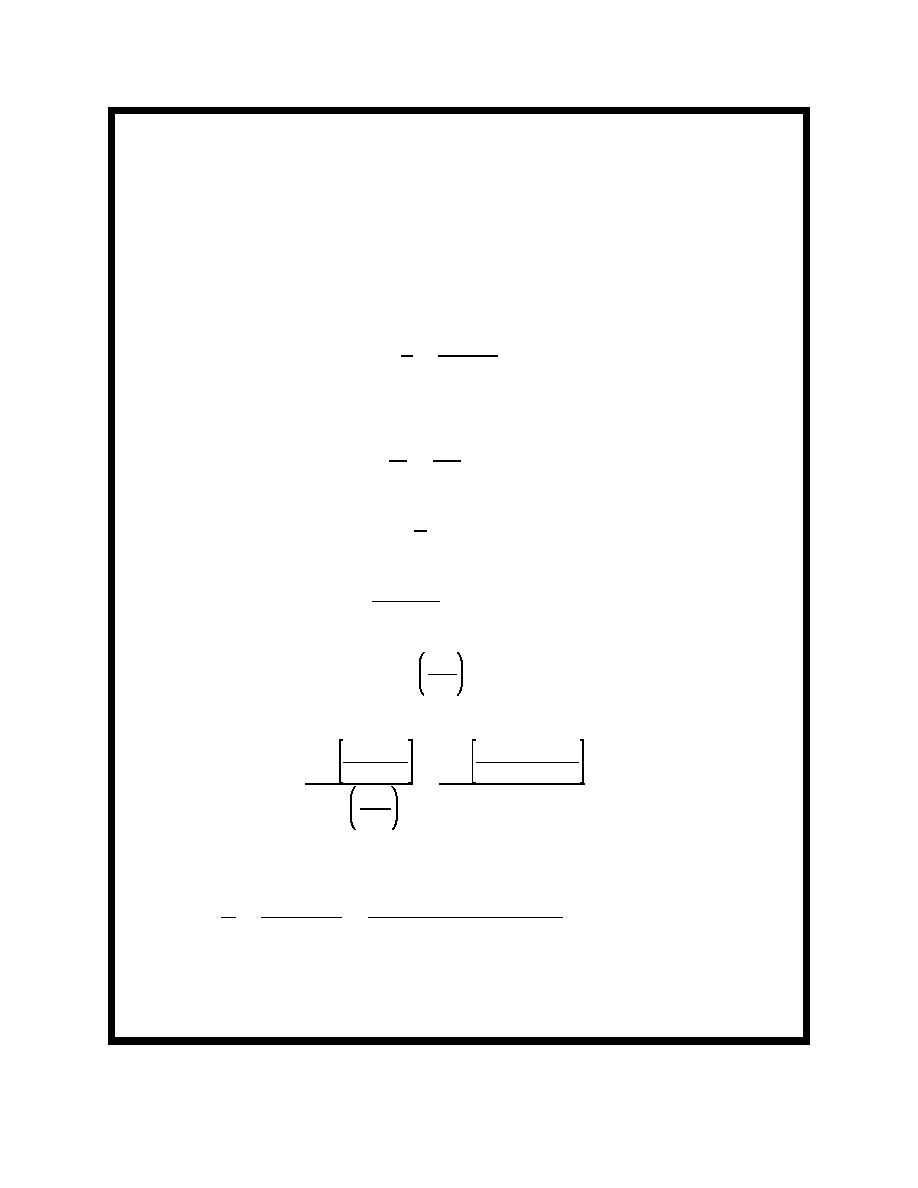
EM 1110-2-1100 (Part II)
30 Apr 02
EXAMPLE PROBLEM II-1-4
FIND:
The height of the wave H assuming that linear theory applies and the average frequency corresponds to the
average wave amplitude.
GIVEN:
An average maximum pressure p = 124 kilonewtons per square meter is measured by a subsurface
pressure gauge located in salt water 0.6 meter (1.97 ft) above the bed in depth d = 12 m (39 ft). The average
frequency f = 0.06666 cycles per second (Hertz).
SOLUTION:
1
1
. 15 s
T'
'
f
(0.0666)
L0 ' 1.56T 2 ' 1.56(15)2 ' 351 m (1152 ft)
d
12
. 0.0342
'
L0
351
From Figure II-1-5, entering with d/L0,
d
' 0.07651
L
hence,
12
L'
' 156.8 m (515 ft)
(0.07651)
and
2πd
' 1.1178
cosh
L
Therefore, from Equation II-1-43
2 π (z % d)
2 π(&11.4 % 12)
cosh
cosh
L
156.8
Kz '
' 0.8949
'
1.1178
2πd
cosh
L
Since η = a = H/2 when the pressure is maximum (under the wave crest), and N = 1.0 since linear theory is
assumed valid,
H
N(p % ρgz)
1.0 [124 % (10.06) (&11.4)]
' 1.04 m (3.44 ft)
'
'
2
ρgKz
(10.06) (0.8949)
Therefore,
H ' 2(1.04) ' 2.08 m (6.3 ft)
Note that the value of K in Figure II-1-5 or SPM (1984) could not be used since the pressure was not measured
at the bottom.
II-1-24
Water Wave Mechanics


 Previous Page
Previous Page
